 (Aka: “Man with A Million”, “Big Money”, “L’homme aux million”, “El millonario”, “Il forestiero”, “Sein größter Bluff” – Colour – 1954)
(Aka: “Man with A Million”, “Big Money”, “L’homme aux million”, “El millonario”, “Il forestiero”, “Sein größter Bluff” – Colour – 1954)
“A true Englishman doesn’t joke when he is talking about so serious a thing as a wager”, wrote Jules Verne in “Around the World in Eighty Days”. This brings to my mind the high-profile bet the Virgin boss, British billionaire Sir Richard Branson made with Tony Fernandes, the group chief executive of Air Asia. By way of passing, I also remember a wager struck up between a couple of my friends during their recent shopping spree at an upper-class boutique in Madrid, when they came across a middle-aged Indian lady admiring the bridal gowns par excellence by prestigious wedding dresses designers displayed there. As for the subject of their bet, one maintained that the lady is looking for a wedding gown for her daughter while the other one heldthat it is for herself. Mind you, as it turned out, none of them were right. The salesman known to them from previous visits later told them that while seeing her off at the door, he had courteously complemented her that he is sure the bridal gown she just purchased would be lovely for her daughter. Right away, she had given him a baffled look and retorted: “For my daughter?! This is for me to wear at a high society party back in Bombay!” That said, she walked out in a huff.
It is not hard to make a decision when you are firm in your belief as to its objective. Apparently, it is Victoria Beckham’s belief in her sense of style that earned her the Womenswear Designer of the Year award at the 2012 WGSN Global Fashion Awards. Quite similarly, the success in a wager is related to the belief in the standpoint of the bettor. However, to play safe from gamble, a better way to triple the money is to fold it thrice and stash it inside the wallet.
 Today I am writing about a wager set by two Englishmen which is the theme of British director Ronald Neame’s “The Million Pound Note”, a film which is rated in a guide as “Witty, intelligent and charming”. Assessing the four main elements of movie making – script, acting, cinematography and editing, I have no reason at all to disagree to this rating.
Today I am writing about a wager set by two Englishmen which is the theme of British director Ronald Neame’s “The Million Pound Note”, a film which is rated in a guide as “Witty, intelligent and charming”. Assessing the four main elements of movie making – script, acting, cinematography and editing, I have no reason at all to disagree to this rating.
 “The Million Pound Note” was released in the United Kingdom in January 1954. This Ronald Neame and John Bryan production was produced at Pinewood Studios in England in 1953 when the film industry and exhibitors were striving to curb the menace and progress of television against box office. It was during this year that 20th Century Fox released their initial CinemaScope film, “The Robe” and also when drive-in theatres sprang up across America. The year saw the release of “Bwana Devil”, the first film on Polaroid’s dual projector 3D system, the precursor to 3-D or three dimensional films. A string of high quality movies hit the screen during 1953: “Julius Caesar”, “Stalag 17”, “From Here to Eternity”, “Gentlemen Prefer Blondes”, and William Wyler’s “Roman Holiday”, catapulting its leading star Gregory Peck to greater heights.
“The Million Pound Note” was released in the United Kingdom in January 1954. This Ronald Neame and John Bryan production was produced at Pinewood Studios in England in 1953 when the film industry and exhibitors were striving to curb the menace and progress of television against box office. It was during this year that 20th Century Fox released their initial CinemaScope film, “The Robe” and also when drive-in theatres sprang up across America. The year saw the release of “Bwana Devil”, the first film on Polaroid’s dual projector 3D system, the precursor to 3-D or three dimensional films. A string of high quality movies hit the screen during 1953: “Julius Caesar”, “Stalag 17”, “From Here to Eternity”, “Gentlemen Prefer Blondes”, and William Wyler’s “Roman Holiday”, catapulting its leading star Gregory Peck to greater heights.
The tall, principled and handsome Gregory Peck was 37 years old when he was cast in the role of Henry Adam which was perfected for him. It is a jolly good treat to watch Peck’s unpretentious seaman going through the experiences goaded by a million pound note as he gained wisdom from the fascination it created in the London society. Born Eldred Gregory Peck, he had attended Sanford Meisner’s Neighborhood Playhouse School of Theater in New York where performers like Grace Kelly, Geraldine Page, Steve McQueen, et al had attended, following which Peck performed on stage till the early 1940s. Actor Eli Wallach remembers him as “tall, slim, almost regal and very shy”, while his contemporary Karl Malden in his memoirs sums up Peck’s days as a stage actor as: “I knew right away that he was going to be a big star. He had a resonant voice and a winning, relaxed manner on stage.”
 Peck’s opportunity came when Hollywood was experiencing the absence of romantic leading men due to the war, debuting with 1944’s “Days of Glory”. Having become an instant star with “The Keys of the Kingdom”, Peck was rated as a downright decent leading man. He had worked with Hollywood legends such as Alfred Hitchcock, John Huston, William Wyler, Elia Kazan, etc, though some of his best films were under the direction of Henry King. His considerable charm had been put to effective use in comedies such as Stanley Donan’s “Arabesque” or Vincente Minelli’s “Designing Woman”, but Peck is least interesting when he is portraying straightforward integrity. Ever the gentleman, Peck was a “straight arrow, who took the job of acting seriously and analytically.” While acting, he maintained that anyone standing around in his eye line had to be moved off out of the way.
Peck’s opportunity came when Hollywood was experiencing the absence of romantic leading men due to the war, debuting with 1944’s “Days of Glory”. Having become an instant star with “The Keys of the Kingdom”, Peck was rated as a downright decent leading man. He had worked with Hollywood legends such as Alfred Hitchcock, John Huston, William Wyler, Elia Kazan, etc, though some of his best films were under the direction of Henry King. His considerable charm had been put to effective use in comedies such as Stanley Donan’s “Arabesque” or Vincente Minelli’s “Designing Woman”, but Peck is least interesting when he is portraying straightforward integrity. Ever the gentleman, Peck was a “straight arrow, who took the job of acting seriously and analytically.” While acting, he maintained that anyone standing around in his eye line had to be moved off out of the way.
 Esteemed as one of the great screen actors with a string of outstanding performances in movies, Peck went on to win five Academy Award nominations and won the Best actor Oscar in 1963 for his performance as the courageous small-town lawyer Atticus Finch in “To Kill a Mocking Bird”. He was also awarded with the Jean Hersholt Humanitarian Award.
Esteemed as one of the great screen actors with a string of outstanding performances in movies, Peck went on to win five Academy Award nominations and won the Best actor Oscar in 1963 for his performance as the courageous small-town lawyer Atticus Finch in “To Kill a Mocking Bird”. He was also awarded with the Jean Hersholt Humanitarian Award.
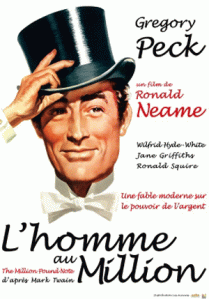 He would become the first actor-president of the Academy of Motion Picture Arts and Sciences for three years from 1967 to 1970, a period known for his efforts to rejuvenate the organization and its image by trying to bring in younger stars into its membership.
He would become the first actor-president of the Academy of Motion Picture Arts and Sciences for three years from 1967 to 1970, a period known for his efforts to rejuvenate the organization and its image by trying to bring in younger stars into its membership.
In 1953 when the pre-production work on “The Million Pound Note” was about to begin, Gregory Peck was in Italy acting in “Roman Holiday”. He was also going through a patch of despair due to separation from his Finnish wife Greta Kukkonen (née Eine Matilda Kukkonen), which was soon reversed when he fell in love with Paris-born journalist Veronique Passani, whom he met when she interviewed him for the French daily newspaper France Soir. Peck would marry her soon after his divorce from Kukkonen in 1955.
 “The Million Pound Note” starts with a display of the company logo of J Arthur Rank Organisation of a golden gong being struck by the gong man’s familiar slow-motion swing of arms. The man you see there is the English heavyweight boxer, Bombardier William “Billy” Thomas Wells, the first of Rank’s gong men. The credits are shown with melodious classical music with stirring effectiveness and snippets from instrumental version of the patriotic British song “Rule Britannia”.
“The Million Pound Note” starts with a display of the company logo of J Arthur Rank Organisation of a golden gong being struck by the gong man’s familiar slow-motion swing of arms. The man you see there is the English heavyweight boxer, Bombardier William “Billy” Thomas Wells, the first of Rank’s gong men. The credits are shown with melodious classical music with stirring effectiveness and snippets from instrumental version of the patriotic British song “Rule Britannia”.
According to the narration at the beginning of the movie, the story starts at a time when Britain was very rich, and deep in the vaults of England there was more gold than anywhere else in the world. Safe, people used to say, safe as the Bank of England. In this time, there lived two elderly and superbly wealthy brothers named Oliver and Roderick Montpelier at their grand mansion at Belgrave Square. Being a bit oddball in nature, they entertained different opinions regarding people’s attitudes to the symbol of wealth. Having decided to play a wager to prove this, the brothers acquired a single currency note for a million pounds issued on June 20, 1903 by the Bank ofEngland.
Oliver Montpelier thought that the note felt good and maintained that such is people’s attitudes to the symbol of wealth that by merely possessing this scrap of paper, without ever cashing it, you could have everything you wanted. On the contrary, Roderick found the note quite unique, an exquisite thing of beauty and believed that it would be quite useless if you were denied the right to cash it.
For now, we are introduced to the leading character of the movie, a penniless and friendless young seaman named Henry Adams from New England who was stranded in London. He was at his wit’s end for having failed in his efforts to find a job. As a last resort, he had even approached the Consulate of the United States of America where he encountered a display board which discouraged American citizens from approaching the Consulate for monetary help:
“This Consulate is not provided with funds by the U.S Government
for the assistance of needy Americans in London”
It was when he was trying to pick up a discarded pear from the pavement that he was invited by the two brothers to their mansion. Though Adam was expecting to find work from them, he was given a letter in a sealed envelope informing him that everything will be explained once he opened the envelope at two o’clock, exactly one hour and ten minutes from then.
On the strength of the assumed fortune in the envelope, Adam went into a decent restaurant and ordered a wonderful, long over due meal which explains the bill:
“Ham, eggs, steak, potatoes, beans, carrots, twice.
Trifle, cheese, coffee, two quarts of ale. Three and ten pence.”
On the threshold of being thrown out of the restaurant for non-payment of the bill, the envelope was opened to discover the note of the enormous value of One Million Pounds! The instant transformation in the attitude of all those around him owing to the gargantuan value of the note was evidently amusing.
Taken for an eccentric millionaire, the red carpet was rolled out for him. He is most welcome to come in anytime he wanted, and to have whatever he wanted. As for his present bill, he doesn’t need to pay it – just forget it, it’s of no consequence at all.
Upon rushing back to the mansion of the brothers to return the note, Adam learned from James, the butler that the brothers were unavailable, having gone abroad for a month. At this point, sitting on the stairs to collect his thoughts, he learned from the letter in the envelope that:
As his mind brooded over the contents of the letter, the note accidently flew off his fingers, the retrieval of which creates a series of funny sequences. In a while, the note again does the grand-work for him at the tailoring shop of Jonathan Reid who, upon seeing the note, takes it as their pride and glory to see His Eminence properly attired for the season.
From here, Adam is referred to as an admiral of the seas to the prestigious Hotel Bumbles, the very place to stay – quiet, modest and discretion itself. Having gone through further complications on arrival at the hotel, and after a good deal of Yes-my-lord-ing and Very-good-my-lord-ing, Adam was elegantly accommodated in the Bridal Suite after the current occupant, the Duke of Frognal, was instantly chucked out.
With his social status realigned, Adam started to move in exclusive social circles of the British aristocracy aided by the American Ambassador. This provided him with the opportunity to meet lovely Portia Lansdowne, niece of the toothy Duchess of Cromarty to whose reception at her Hampshire House he was invited to attend.
Some people will tell the world anything they know about everything. Maybe that’s not a bad thing. Given that the sugar-coated rumour mills started to roll about his mere acquaintance with Lord Lloyd Hastings, the shares of Hasting’s company shoot up – a rather happy moment at the Stock Exchange.
Whilst Adam was all set to soar and score, things unfortunately started to look pretty foul when the Duke of Frognal pulls a prank and hides the note with the help of Renie, the hotel chambermaid. It was a wake up call for Adam. As Adam started to scale down the heights he had climbed, it began to dawn on him that he would have to actually spend the money if he wishes to live like a Lord….
Produced by Ronald Neame and British production designer turned producer John Bryan, the film features an array of British crew and technicians though a good number of the casts are not credited. The screenplay founded on an updated version of a short story by Mark Twain called “The Million Pound Bank Note” is by expert British documentary director and writer (Noreen) Jill Craigie.
 The characters of the two brothers being integral to the structure of the film are joyously portrayed by two brilliant British actors. Trained at the Royal Academy of Dramatic Art, jovial Ronald Squire from the Liverpool Repertory Theatre had acted in many light comedy roles before he appeared in the role of Oliver Montpelier. Wilfrid Hyde-White’s role as Roderick Montpelier, marks one of the various comedies he made before shifting to America in the 1960s. An impeccable character actor of stage and screen who had often acted opposite Sir Laurence Olivier and Vivien Leigh, and is best remembered for his role as Col. Hugh Pickering in George Cukor’s “My Fair Lady” (1964) in which he sets up a wager with Prof. Henry Higgins (Rex Harrison) challenging him to transform flower girl Eliza Doolittle (Audrey Hepburn) into a lady.
The characters of the two brothers being integral to the structure of the film are joyously portrayed by two brilliant British actors. Trained at the Royal Academy of Dramatic Art, jovial Ronald Squire from the Liverpool Repertory Theatre had acted in many light comedy roles before he appeared in the role of Oliver Montpelier. Wilfrid Hyde-White’s role as Roderick Montpelier, marks one of the various comedies he made before shifting to America in the 1960s. An impeccable character actor of stage and screen who had often acted opposite Sir Laurence Olivier and Vivien Leigh, and is best remembered for his role as Col. Hugh Pickering in George Cukor’s “My Fair Lady” (1964) in which he sets up a wager with Prof. Henry Higgins (Rex Harrison) challenging him to transform flower girl Eliza Doolittle (Audrey Hepburn) into a lady.
 Joyce Grenfell (born Joyce Irene Phipps) who portrays the Duchess of Cromarty was initially a radio critic columnist who went on to debut on the London stage before she made entertaining the troops her principal work during World War II, a period which she described as “The Time of My Life”*. After the war Joyce, along with Viola Tunnard, her accompanist who was a gifted musician and able pianist, went for one more tour to “Re-Joyce” the troops, starting at Benghazi in December 1952 and finishing off in Malta by January 1953. Following this, she acted in a movie called “Genevieve” before her appearance in “The Million Pound Note”, which her mother approved since she was appalled of the number of unattractive characters her daughter played in films.
Joyce Grenfell (born Joyce Irene Phipps) who portrays the Duchess of Cromarty was initially a radio critic columnist who went on to debut on the London stage before she made entertaining the troops her principal work during World War II, a period which she described as “The Time of My Life”*. After the war Joyce, along with Viola Tunnard, her accompanist who was a gifted musician and able pianist, went for one more tour to “Re-Joyce” the troops, starting at Benghazi in December 1952 and finishing off in Malta by January 1953. Following this, she acted in a movie called “Genevieve” before her appearance in “The Million Pound Note”, which her mother approved since she was appalled of the number of unattractive characters her daughter played in films.
 A.E. (Matty) Matthews in the role of the hard hit Duke of Frognal who repeats his title as a form of bragging about his “wealth” but is a lot poorer is perfectly cast. Matthews is popular for a crack he once made, “I always wait for “The Times” each morning. I look at the obituary column, and if I’m not in it, I go to work”. The film also stars Wilbur Evans (American Ambassador), Jane (Mary) Griffiths (Portia Lansdowne), bald-headed American actor Hartley Power (Lord Lloyd Hastings), Maurice Denham (Jonathan Reid), Reginald Beckwith (Rock), Brian Oulton (Lloyd), John Slater (Parsons), Hugh Wakefield (in his last role, Duke of Cromarty), Bryan Forbes (Todd), George Devine (Chop house/Restaurant proprietor), Hugh Griffith (Potter), etc.
A.E. (Matty) Matthews in the role of the hard hit Duke of Frognal who repeats his title as a form of bragging about his “wealth” but is a lot poorer is perfectly cast. Matthews is popular for a crack he once made, “I always wait for “The Times” each morning. I look at the obituary column, and if I’m not in it, I go to work”. The film also stars Wilbur Evans (American Ambassador), Jane (Mary) Griffiths (Portia Lansdowne), bald-headed American actor Hartley Power (Lord Lloyd Hastings), Maurice Denham (Jonathan Reid), Reginald Beckwith (Rock), Brian Oulton (Lloyd), John Slater (Parsons), Hugh Wakefield (in his last role, Duke of Cromarty), Bryan Forbes (Todd), George Devine (Chop house/Restaurant proprietor), Hugh Griffith (Potter), etc.
The music is provided by prolific post-Romantic English composer William Alwyn and conducted by the Scottish conductor/composer (James) Muir Mathieson. Once a professor (from 1926 to 1955) at the Royal Academy of Music in London, Alwyn had progressed from scores for World War II documentary films for the British Ministry of Information to scores for feature movies such as “Svengali”, “Zarak”, “Swiss Family Robinson”, etc. He has decorated the movie with classic symphonies; music that is both melodic and eminently accessible. At times, his tunes are both subtle and profound, dominated by violin notes, atmospheric waltzes, snippets from popular British music and he even used bits from the Yankee Doodle.
One of the greatest of British cinematographers, Geoffrey Unsworth is a recipient of an OBE (Officer of the Order of the British Empire), and winner of two Oscars, among others. Unsworth has done a wonderful workmanlike job here, assisted by camera operator Jim Bawden. With a long string of superb films behind him, among them “A Night to Remember” (1958), “Cabaret” (1972), “Superman” (1978), etc, he died of a heart attack at the age of 64 on the set of Roman Polanski’s “Tess” (1979).
 Production designer Jack Maxsted (“The Adventurers”, “Diamonds are Forever”, etc) together with John (Allan Hyatt) Box did the Art Direction for the film. Though Box’s career got an upshot with David Lean’s “Lawrence of Arabia” (1962), he was known for recreating exotic locations in unlikely places. He had effectively constructed Chinese city walls in Wales for “The Inn of the Sixth Happiness” (1958) when the unit was denied permission to shoot in China. When a Russian country house in snowy landscape had to be replicated in Spain for “Doctor Zhivago” (1965), he would accomplish that by using white plastic sheets and marble dust. (For references on John Box and William Alwyn, you may read my review of August 23: “StarChoice 9: Zarak”)
Production designer Jack Maxsted (“The Adventurers”, “Diamonds are Forever”, etc) together with John (Allan Hyatt) Box did the Art Direction for the film. Though Box’s career got an upshot with David Lean’s “Lawrence of Arabia” (1962), he was known for recreating exotic locations in unlikely places. He had effectively constructed Chinese city walls in Wales for “The Inn of the Sixth Happiness” (1958) when the unit was denied permission to shoot in China. When a Russian country house in snowy landscape had to be replicated in Spain for “Doctor Zhivago” (1965), he would accomplish that by using white plastic sheets and marble dust. (For references on John Box and William Alwyn, you may read my review of August 23: “StarChoice 9: Zarak”)
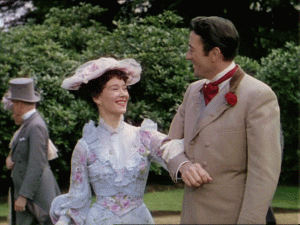 The Costume design is by Margaret Furse, the Academy Award Winner for Best Costume for “Anne of the Thousand Days” who also did costumes for “Oliver Twist”, “The Crimson Pirate”, “Mary, Queen of Scots”, etc. If one looks closely at Furse’s costumes in the movie, we can find out how the small details which would normally go unnoticed make an impact on the overall effect in the frames.
The Costume design is by Margaret Furse, the Academy Award Winner for Best Costume for “Anne of the Thousand Days” who also did costumes for “Oliver Twist”, “The Crimson Pirate”, “Mary, Queen of Scots”, etc. If one looks closely at Furse’s costumes in the movie, we can find out how the small details which would normally go unnoticed make an impact on the overall effect in the frames.
 Make up and Hair styles are done by George Blackler and Biddy Chrystal respectively. Blackler had headed the make-up department for “Black Narcissus”, “Operation Crossbow”, “Dracula A.D. 1972”, “The Satanic Rites of Dracula”, etc; while the renowned hairstylist Chrystal (aka. Eileen Chrystal) has enough feathers to line her nest for having worked on movies such as “The Sword and the Rose”, “Sword of Lancelot”, “The Fearless Vampire Killers”, “11 Harrowhouse”, etc. While the set dressing is by Dario Simoni, editor Clive (Stanley) Donner cuts it all together.
Make up and Hair styles are done by George Blackler and Biddy Chrystal respectively. Blackler had headed the make-up department for “Black Narcissus”, “Operation Crossbow”, “Dracula A.D. 1972”, “The Satanic Rites of Dracula”, etc; while the renowned hairstylist Chrystal (aka. Eileen Chrystal) has enough feathers to line her nest for having worked on movies such as “The Sword and the Rose”, “Sword of Lancelot”, “The Fearless Vampire Killers”, “11 Harrowhouse”, etc. While the set dressing is by Dario Simoni, editor Clive (Stanley) Donner cuts it all together.
 As for director Ronald Neame, he was born in 1911 in London to beautiful silent film actress Ivy Close, Neame was the producer of British filmmaker David Lean’s (1908-1991) early British films “Great Expectations” (1946), and “Oliver Twist” (1948). Like director George Stevens, Victor Fleming, Phil Rosen, he was an outstanding cinematographer, before becoming an expert director at light, frothy comedies. Although Neame was uncredited, he was an assistant cameraman on Alfred Hitchcock’s “Blackmail” (1929), the first sound-on-film British talkie.
As for director Ronald Neame, he was born in 1911 in London to beautiful silent film actress Ivy Close, Neame was the producer of British filmmaker David Lean’s (1908-1991) early British films “Great Expectations” (1946), and “Oliver Twist” (1948). Like director George Stevens, Victor Fleming, Phil Rosen, he was an outstanding cinematographer, before becoming an expert director at light, frothy comedies. Although Neame was uncredited, he was an assistant cameraman on Alfred Hitchcock’s “Blackmail” (1929), the first sound-on-film British talkie.
As in every movie, there is a price dictated by the subject matter, the content and the showmanship values. “The Million Pound Note” is a fairly pleasing comedy which aptly displays the Edwardian atmosphere, flavour and local colour of England. You could see the muffin seller walking down the street, the family picnic on the green grass, uniformed school children lined up for outing, etc.
With a witty, well-written screenplay by expert writer Jill Craigie, Neame didn’t have to run to the hull every other minute to check for leaks. The meal at the restaurant leading to the discovery of the note is beautifully staged and ably photographed by Geoffrey Unsworth while Alwyn’s pleasant music flutters all around it. Another amusing scene is the incident at Jonathan Reid’s tailor shop.
The scenes of Portia Lansdowne which ends with a pop at matrimony, provides the emotional quotient. In all fairness, the movie is nicely ornamented and acted under the graceful direction of Ronald Neame. Being a comedy, everything works out happily though the movie will set us thinking about the extraordinary way some people’s attitudes change by the symbol of wealth and also why some regard the rich as superior to the poor. “The Million Pound Note” is a classic comedy which can be watched by the whole family.
(Text: © JS/Manningtree Archive)

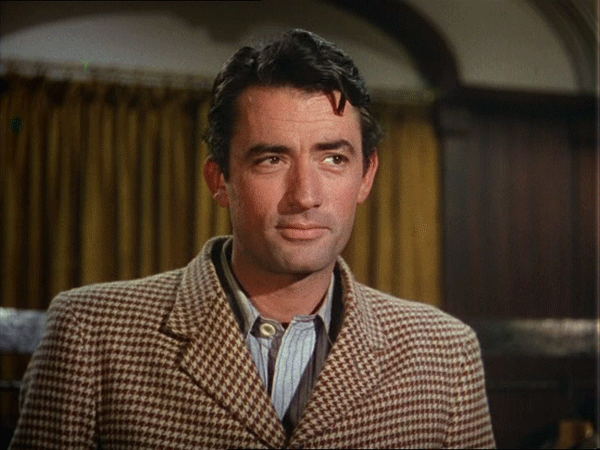
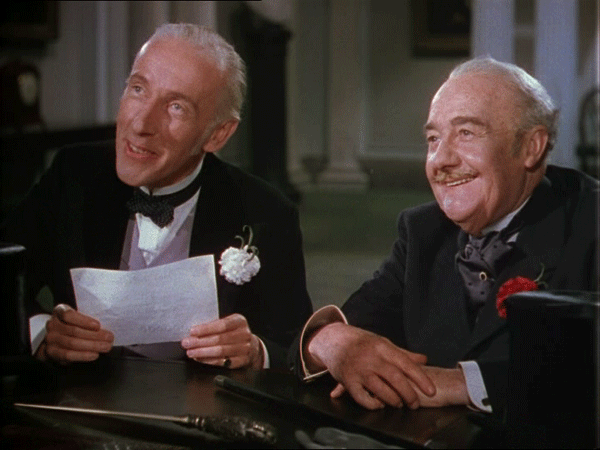
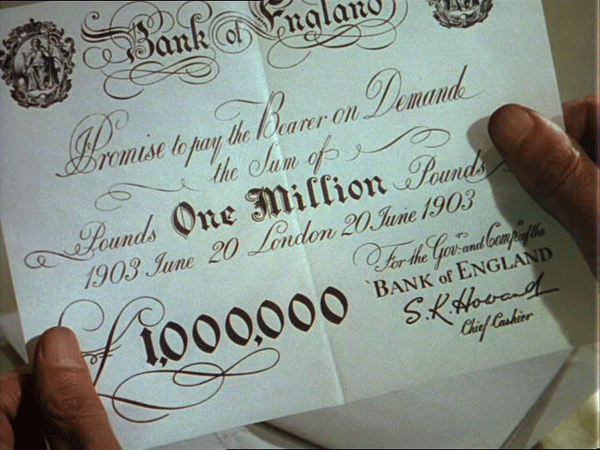
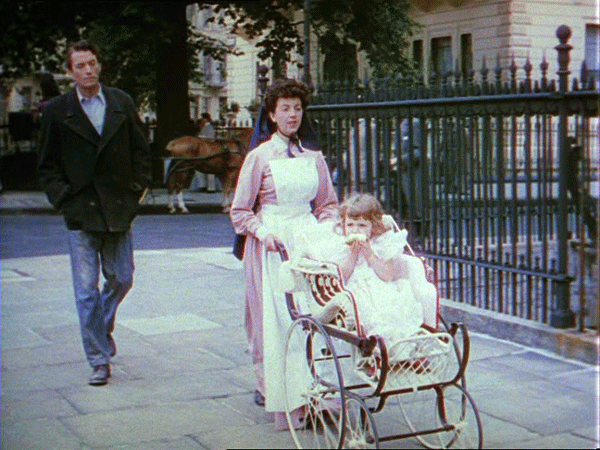

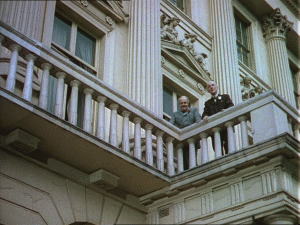
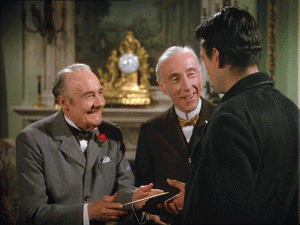

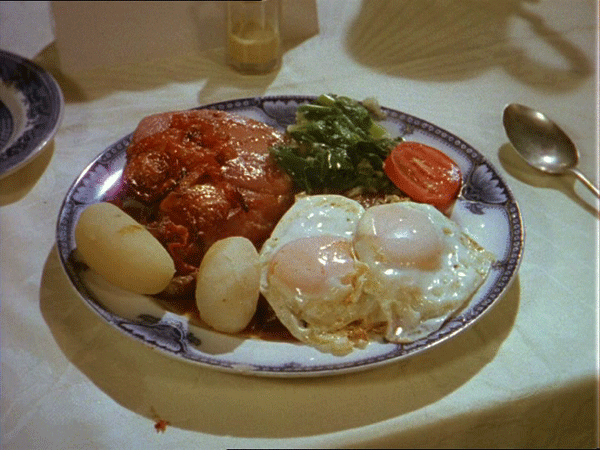

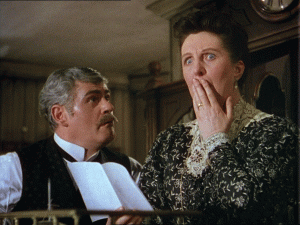
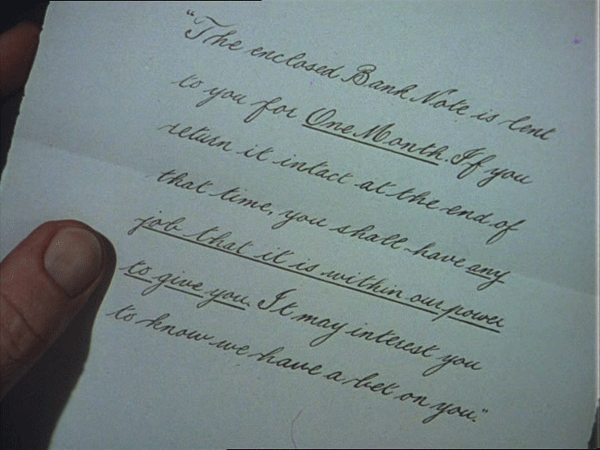
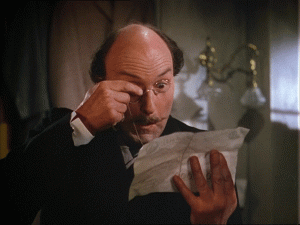

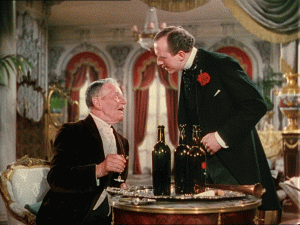
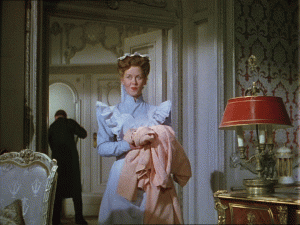

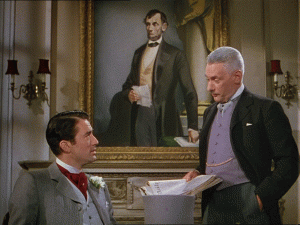
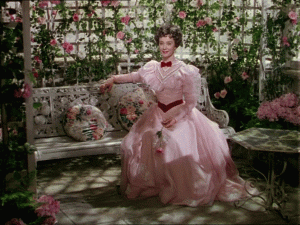
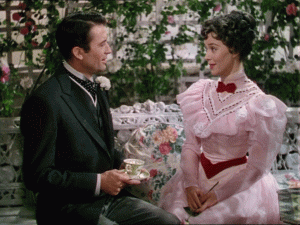
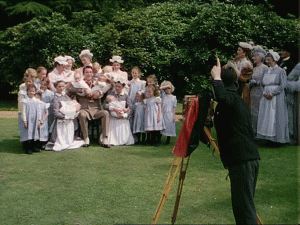




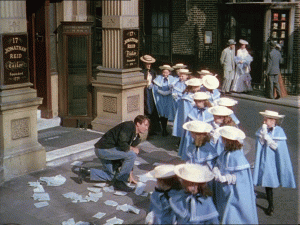
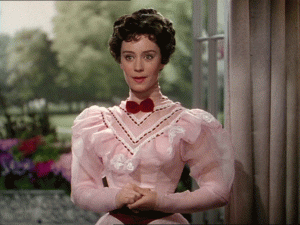
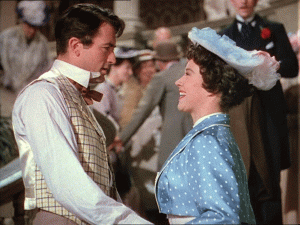


Super happy-making film, “……. play it again, Jo!……”
Great film, great post yet again!
It sure is… thank you.
A very entertaining article. Thank you. I remember watching this film many years ago!! Bless you.
Thank you, Lizzie. I am an ardent follower of your wonderful blog.
I haven’t seen the movie, Jo, however this is an excellent article. Gregory Peck was certainly a ‘man apart’… His acting was indeed a joy to watch.
I am now taking note of the title, and hoping our local store has a copy…!
Fantastic! I am sure you will like the movie, Carol. Best of luck at the local DVD store. Jo
I so miss watching old movies! On TCM they show the same few ones,the rest are all newer. No more local DVD store here,but thet didn’t have anything like that,either. I would watch this one 🙂
DVD of this movie is available with Amazon.co.uk Good luck.
Interesting 🙂
I remember seeing this movie. Thanks for reminding me it is still out there. I’m going to get a copy and watch it again. 🙂
Fantastic. 🙂
Hi,
Great post, thoroughly enjoyed reading this!
I have never seen ‘Million Pound Note’, but Gregory Peck is one of my favourite ‘old’ Hollywood actors! The film seems a little like ‘Trading Places’ Dan Aykroyd and Eddie Murphy?
Bex
Yes, Trading Places by John Landis has shades of The Prince and the Pauper and of this movie. Jo x
Ah, OK, thanks for that. Bex
I’ve just ordered this film for my husband – I know he’s going to love it. Thank you so much for bringing it to my attention 🙂
You are welcome, Tracy.
I am so happy to read this. This is the type of manual that needs to be given and not the random misinformation that is at the other blogs. Appreciate your sharing this best doc.
louis vuitton store http://louisvuittonstor127.webeden.co.uk